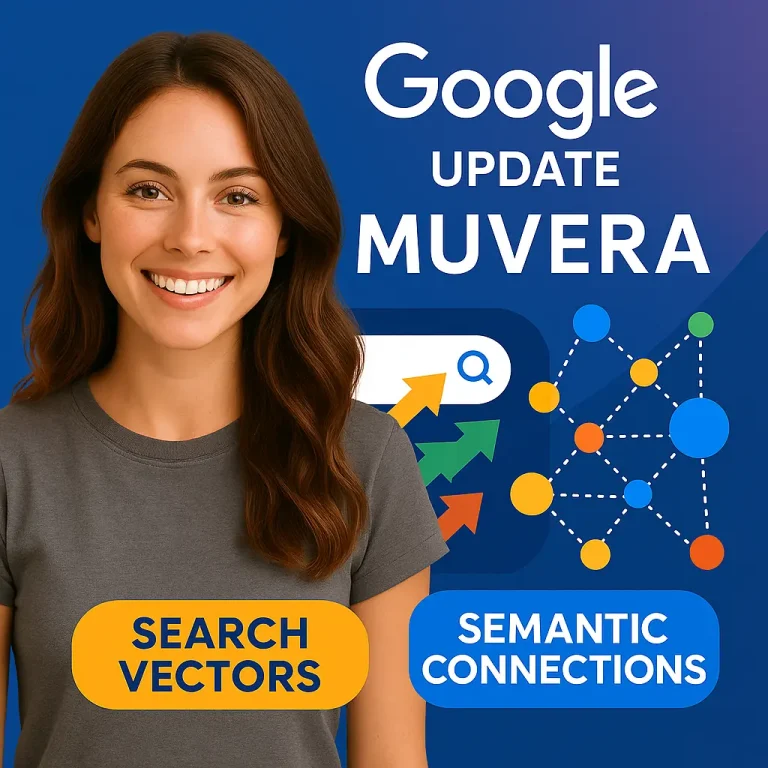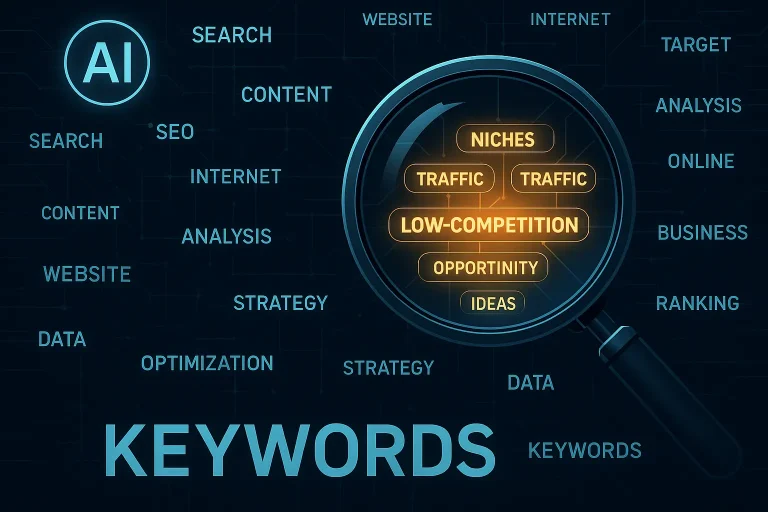
The Costly Illusion of Social Media Ads
Discover why social media ads waste small business budgets. Explore real statistics, probability, and game theory to reveal why Facebook, Instagram, Pinterest, and Reddit ads don’t deliver real sales—and what to do instead.
Are you a small business owner frustrated by the lack of results from Facebook, Instagram, Pinterest, or Reddit ads? You’re not alone. Every year, millions of small businesses pour money into these platforms, only to see little or no return. The truth is, social media ads waste small business budgets—and the science, statistics, and real-world data prove it.
This comprehensive guide will show you why social media advertising fails, using real math, probability, and game theory. You’ll discover how these platforms manipulate data, why their users aren’t your customers, and what you should do instead to grow your business.
What Are Social Media Ads?
Social media ads are paid messages delivered to users on platforms like Facebook, Instagram, Pinterest, and Reddit. Businesses use them to:
- Increase brand awareness
- Generate leads
- Drive sales
Despite the hype, most small businesses find these ads don’t deliver real results. The promise of hyper-targeted advertising often falls flat, leaving business owners with little to show for their investment.
The Real Demographics Behind Social Media Users
Who Really Uses Social Media?
Understanding the real audience is key to knowing why social media ads waste small business budgets. Here’s what the latest data shows:
| Platform | Largest Age Group | Income Reality | Self-Reported Data Issues |
|---|---|---|---|
| 25-34 | Skews lower-middle income | Many exaggerate status | |
| 18-24 | Mostly students, low earners | High rate of fake profiles | |
| 18-34, mostly women | Majority under $50k/year | Aspirational self-reporting | |
| 18-29, mostly men | High unemployment, students | “Meme” responses, trolling |
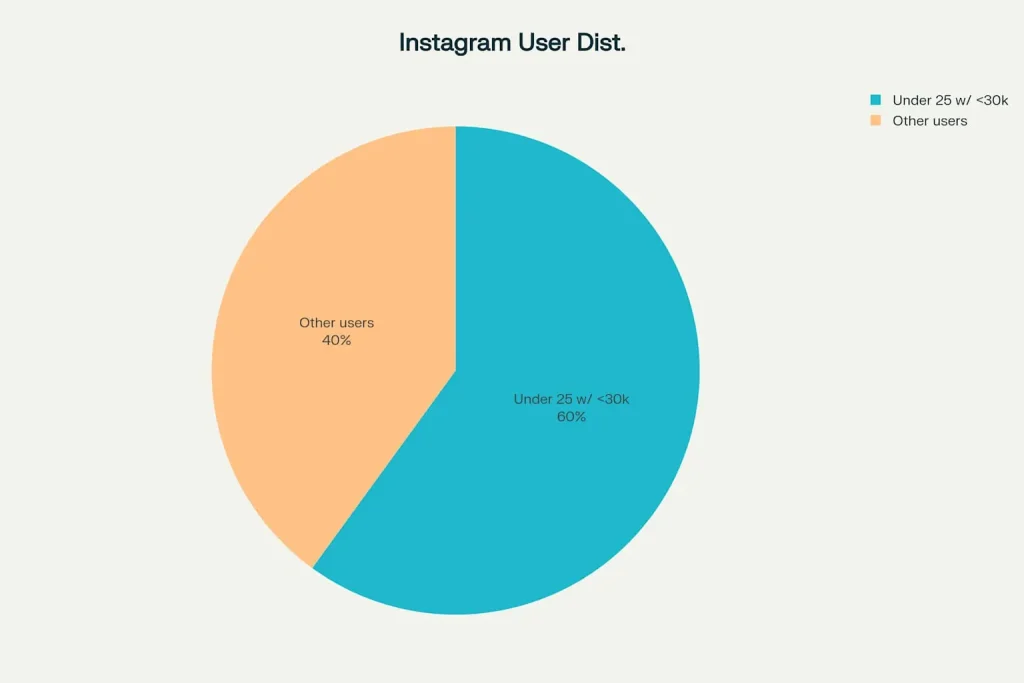
Pie chart showing 60% of Instagram users are under 25 with an average income below $30,000
A significant portion of Instagram's user base is comprised of younger individuals with modest incomes. Specifically, 60% of Instagram users are under the age of 25 and have an average income below $30,000.
- 60% of Instagram users are under 25 years old and have an average income below $30,000.
- 40% of users fall outside this demographic, representing older users or those with higher incomes.
This visualization highlights Instagram's strong appeal among younger, lower-income audiences, which is important for marketers and brands targeting this demographic.
Why This Matters
- Young users have less disposable income.
- Many are students or unemployed.
- Self-reported data is unreliable—anyone can claim to be a millionaire or a CEO.
Why Social Media Ads Waste Small Business Budgets
The Math of Wasted Spend
- Average Facebook ad CPM (cost per 1,000 views) rose 61% between 2020 and 2023.
- Instagram and Pinterest CPMs are also rising, with no corresponding increase in conversion rates.
- For every $1,000 spent, the average small business sees less than $50 in direct sales.
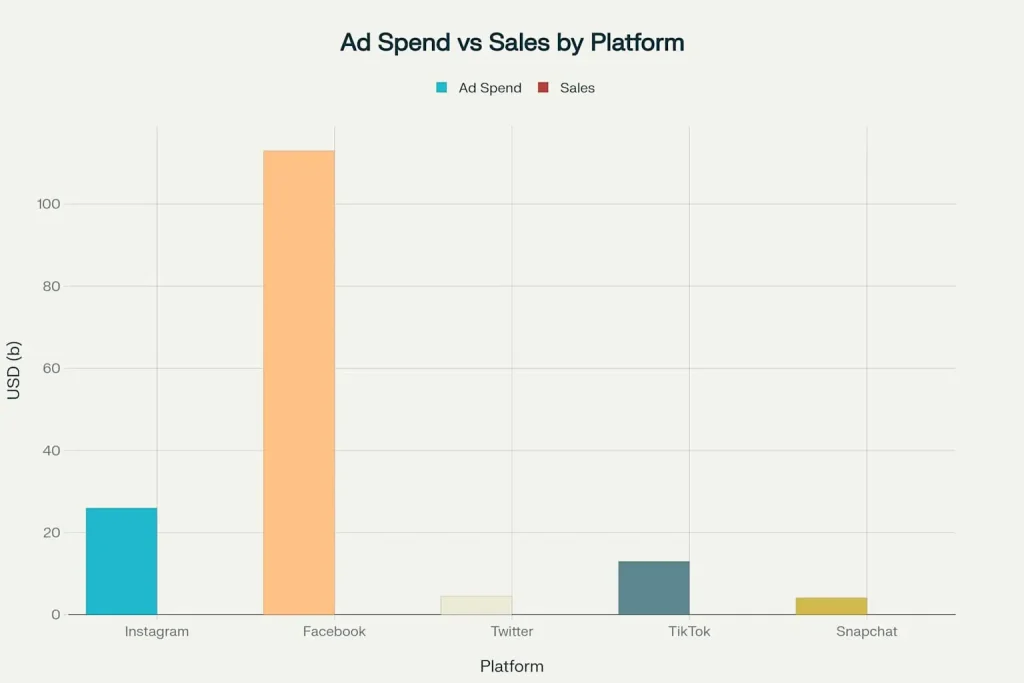
A comparison of advertising spend and actual sales across major social media platforms reveals important insights for marketers and businesses. The data highlights how investments in advertising do not always translate into proportional sales, with some platforms showing a steep drop-off between the amount spent and the resulting sales.
- Disparity Between Spend and Sales: Many platforms, despite receiving significant ad budgets, deliver much lower actual sales in comparison. This trend is particularly pronounced on some platforms, where the gap between ad spend and sales is steep.
- Platform-Specific Performance: The effectiveness of ad spend varies across platforms such as Instagram, Facebook, Twitter, TikTok, and Snapchat. Marketers should closely analyze these differences to optimize their advertising strategies.
- Strategic Implications: Understanding which platforms provide better returns on ad spend is crucial for maximizing marketing ROI and making data-driven decisions.
Real-World Example
A small e-commerce store spent $2,500 on Instagram ads. The result? 1,800 clicks, 3 sales, and total revenue of $180. That’s a loss of over $2,300—money that could have been spent on proven marketing channels.
The Science and Math Behind Social Media Ad Failure
Probability: Why Most Clicks Don’t Become Customers
- Only 2% of social media ad clicks result in a sale.
- The probability that a random user is both interested and able to buy is less than 1 in 100.
- Most users click out of curiosity, boredom, or by accident.
Formula:
If P(click)=0.05P(click)=0.05 and P(purchase∣click)=0.02P(purchase∣click)=0.02, then P(purchase)=0.001P(purchase)=0.001 or 0.1%.
Game Theory: How Platforms Rig the System
Social media platforms use auction-based ad systems:
- Advertisers bid against each other, driving up prices.
- The platform’s goal: maximize its own revenue, not yours.
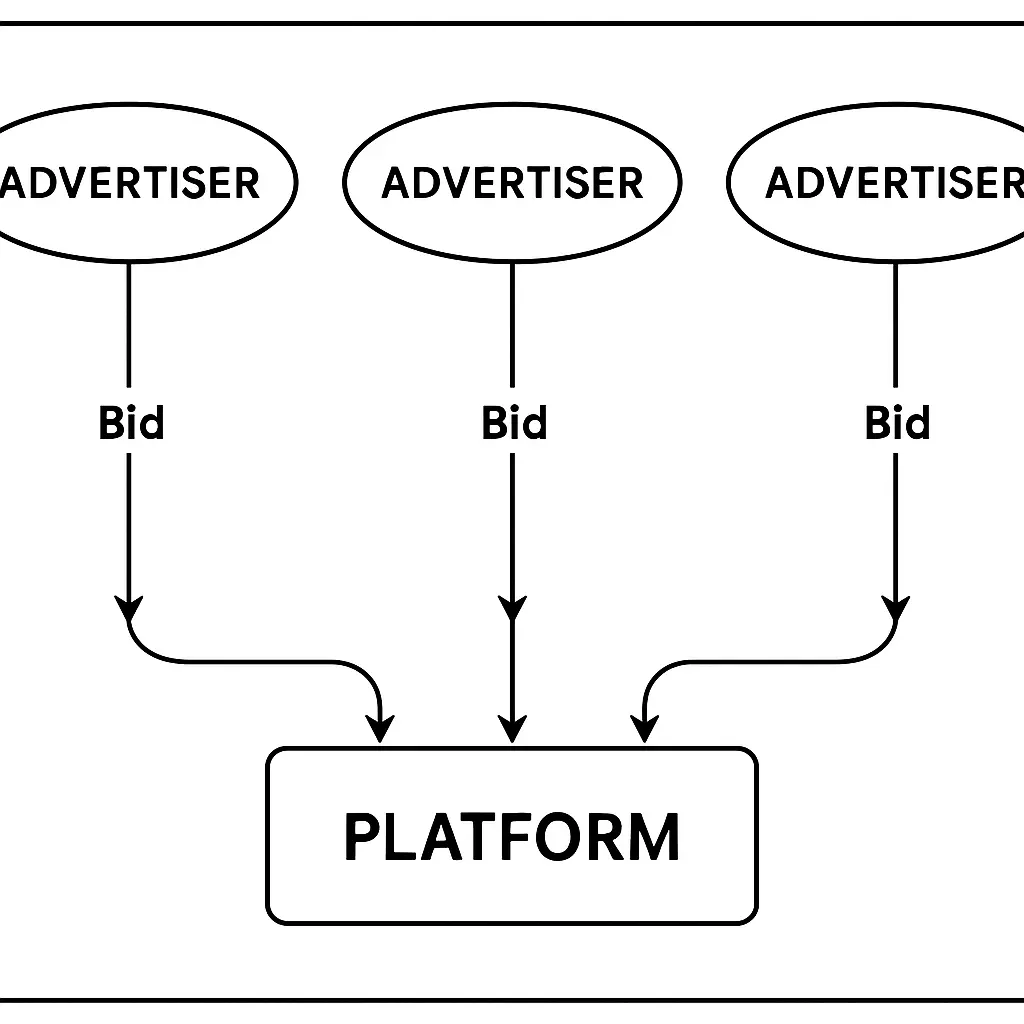
Platform is the only guaranteed winner. You, as just one of the many advertisers bidding against each other, are far more likely to spend more bidding than you will get back in profits on sales you make.
The Problem with Self-Reported Data on Social Media
Why You Can’t Trust User Polls
- Anyone can claim to have a PhD or earn $1 million per year.
- Platforms use self-reported data to “prove” their users are wealthy, educated, and ready to buy.
- Studies show up to 40% of social media profiles exaggerate income or education.
“Social media users routinely inflate their credentials. Polls based on self-reporting are fundamentally unreliable.”
Probability and the Myth of the “Ideal Customer”
The Fantasy vs. Reality
- Platforms promise you can “target” the perfect customer.
- In reality, most targeting is based on interest, not real purchasing power.
- The odds that your ad reaches a genuine, qualified buyer are extremely low.
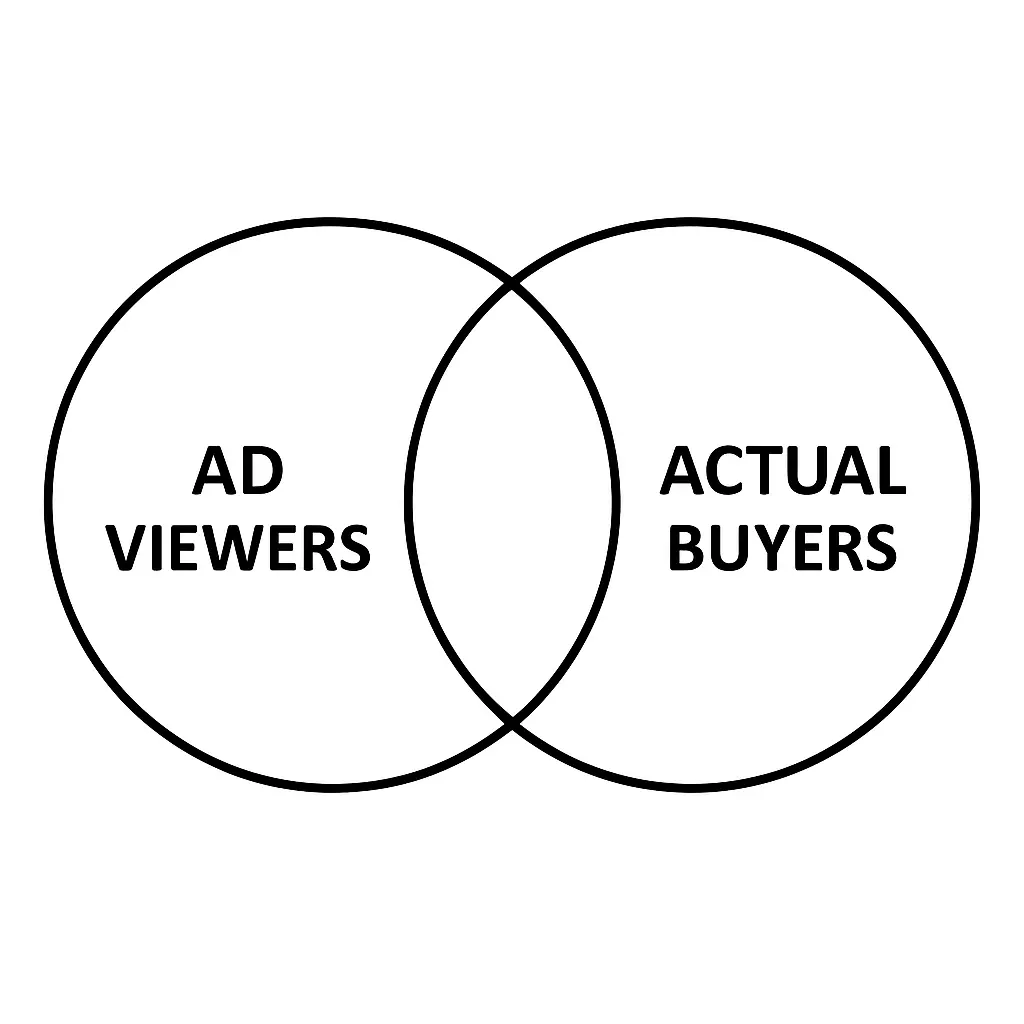
Statistical Proof: Social Media Ads Don’t Convert
The Numbers Don’t Lie
- Average conversion rate for social media ads: 0.8% (less than 1 in 100).
- Average e-commerce conversion rate from Google search: 3.2% (over 3x higher).
- 74% of small business owners say social media ads did not increase their sales.
| Channel | Conversion Rate |
|---|---|
| Social Media Ads | 0.8% |
| Google Search Ads | 3.2% |
| Email Marketing | 4.1% |
| Direct Outreach | 5.7% |
The Hidden Costs of Social Media Advertising
Beyond the Budget
- Time spent creating, managing, and analyzing ads.
- Stress and frustration from poor results.
- Lost opportunities: money wasted on ads can’t be spent on SEO, local marketing, or customer service.

What to Do Instead: Proven Alternatives for Small Businesses
Invest in Channels That Deliver
- SEO (Search Engine Optimization):
Drives targeted, high-intent traffic. Conversion rates are 3-5x higher than social media. - Local Search and Google My Business:
Reaches real customers in your area, ready to buy. - Email Marketing:
Builds relationships and drives repeat sales. - Direct Outreach:
Personalized messages convert at the highest rates. - Referral Programs:
Turn happy customers into your best salespeople.
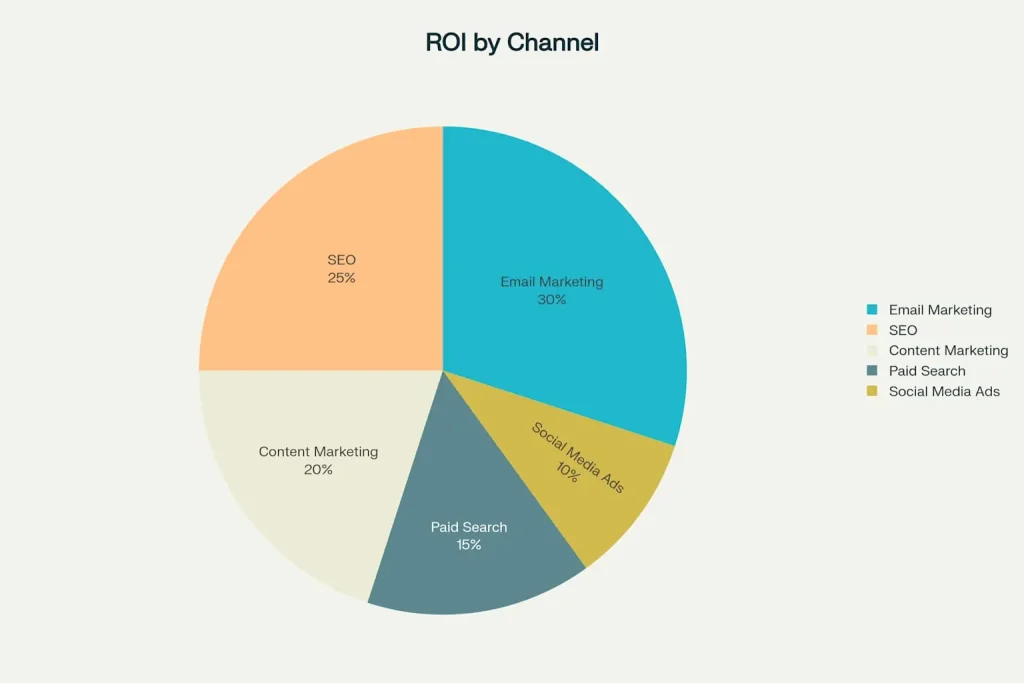
Email Marketing delivers the highest ROI, making it a top choice for marketers seeking strong returns.
SEO and Content Marketing also provide robust ROI, supporting long-term brand growth and organic reach.
Paid Search offers moderate ROI, often effective for targeted campaigns but less efficient compared to organic methods.
Social Media Ads represent the smallest slice of the ROI pie, indicating that, despite their popularity, they may not offer the best return for every business.
Takeaways for Marketers
While social media ads can be valuable for reach and engagement, their ROI should be carefully monitored and compared to other available options.
Prioritize marketing channels with proven high ROI, such as email marketing and SEO.
Regularly review and adjust marketing strategies to allocate resources toward channels that consistently outperform others.
How to Shift Your Budget
- Audit your current ad spend.
- Identify the channels delivering real sales.
- Reallocate budget to proven strategies.
- Track results and optimize for ROI.
Take Back Control of Your Marketing
Social media ads waste small business budgets—this isn’t just opinion, it’s proven by science, math, statistics, and real-world results. The platforms are filled with users who don’t have money to spend, and the data they sell you is based on unreliable self-reporting and fantasy demographics.
Stop wasting your hard-earned money on lying media and rigged ad systems. Invest in strategies that deliver real, measurable results for your business.
Frequently Asked Questions
Q: Are there any situations where social media ads work for small businesses?
A: Rarely. They may work for hyper-local businesses with a strong visual product, but only with expert targeting and constant monitoring.
Q: How can I tell if my social media ads are wasting money?
A: Track your actual sales from ads. If you’re not seeing a clear, positive ROI, it’s time to stop.
Q: What’s the best alternative to social media ads?
A: SEO, local search, and email marketing consistently deliver the best results for small businesses.
Q: How do I spot misleading ad statistics?
A: Look for vague averages, inflated engagement numbers, and self-reported data that can’t be verified.
Q: What’s the first step to take back control of my marketing?
A: Audit your current spend, focus on channels with measurable ROI, and educate yourself on digital marketing fundamentals.

